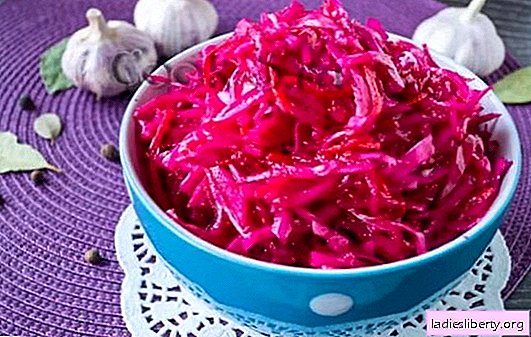
Just leave fresh and barely warm milk on the kitchen table, and read the article to the end, watch a movie or do something else, and at this time the invisible helpers will naturally make homemade milk sour milk.
On this, the topic of the article could be considered fully disclosed, but since the conversation has begun, why not learn more in order to learn how to make dairy products on your own?
Milk is a product that is difficult to spoil. Sour milk is a new tasty and healthy product. This was known to people who tamed the first mammals, but did not have time to invent refrigerators for storing perishable foods. Then the first yogurt appeared. Maybe the first dairy product was obtained from goat milk, or maybe from the milk of mare or buffalo. The taste of milk of these animals is different, but its main components were and remain unchanged.
Modern scientific and technological achievements of mankind have allowed us to consider the composition of milk, to find out what biochemical processes turn it into a new useful product.
How to make homemade milk curd: helpers from nature
We are surrounded by an invisible world of microorganisms. Sour-milk bacteria help people not only in the fight against harmful microbes, but also provide invaluable services in creating a diverse assortment of sour-milk products. Without them, people would never know the taste of cottage cheese, sour cream, yogurt, kaimak, ayran, koumiss, they would not know how to make homemade yogurt from milk, because without this invisible naked eye army of helpers by nature such dairy products would not exist at all.
The dairy industry has long been "hired" by fermented milk microorganisms. At home, they also work very successfully, but housewives often do not wonder why the tastes of kefir, yogurt and other sour-milk products differ significantly from each other.
It’s time to get acquainted with the species diversity of beneficial microorganisms so that you can not only make homemade yogurt from milk, but also please your loved ones with other fresh sour-milk products.
So, sour milk bacteria there are two types:
Cocci - spherical mesophilic bacteria that do not form spores. Optimum temperature environment: 25-370C. Propagated by cell division. Nutrition: milk sugar (including lactose). As a result of the processing of carbohydrates, lactic acid is formed, without gas formation. With the formation of acidity of 6-7 mg / l, milk streptococci stop working, since a higher acid content has a harmful effect on them. The most widely used types for the preparation of fermented milk products at home are dairy lactococci, since they are most common in the wild.
Bacilli (sticks) - thermophilic bacteria, oblong shape. Work best at 40-450C. Bulgarian bacillus and acidophilia are most widely used for the preparation of sour-milk drinks, are considered to be "pure" cultures (grown in laboratory conditions), and withstand a much higher level of acidity than mesophilic bacteria.
Along with sour-milk bacteria in the production of some lactic acid products (koumiss, kefir, acidophilus), yeast that forms alcohol is used. These two types of microorganisms get along well with each other.
Very often, bifidococci are used to enrich the product - bacteria that are classified as a separate probiotic group of microorganisms.
To complete a brief excursion into the earth’s microworld, it remains to add that the shelf life of dairy products is increased, precisely due to the influence of lactic acid bacteria and the acidic environment that they form as a result of their life. An acidic environment prevents the development of putrefactive bacteria, mold and other harmful microorganisms, acting as a preservative, although sour-milk products are not considered as canned goods.
How to make homemade yogurt from milk - pre-processing of raw materials
Of course, speaking of homemade yogurt, most often it is meant to be made from homemade milk. In this regard, you must first remember the precautions when eating homemade products from milk, which will help to avoid infection with intestinal infections. For information, non-pasteurized cow's milk contains 96% of pathogenic microorganisms and only 4% contains beneficial microflora. Only thanks to pasteurization and the influence of sour-milk bacteria is it possible to neutralize the microbes contained in the fresh product.
For this reason, milk supplied to dairy enterprises is subjected to compulsory pasteurization. At home, for the preparation of fermented milk products from unpasteurized milk, you must at least make sure that the animal from which it is regularly vaccinated and examined by a veterinarian receives proper care and quality feed. If home-made milk was bought on the market from an unfamiliar seller, it is better not to risk it: be sure to pasteurize. It is advisable to do this in a non-stick and non-oxidizing container. Milk intended for further preparation of fermented milk products is heated to 850 ° C and maintained at this temperature for at least 10 minutes; at a temperature close to boiling (92-950С) - at least 5 minutes.
At this preparatory stage for the preparation of yogurt and other drinks can be considered completed.
How to make homemade yogurt from milk - the main technological methods
Now, having learned the most important about sour-milk bacteria, we will consider what products and in what way can be prepared, thanks to the use of different microorganisms.
Every housewife knows at least one, the easiest way to cook yogurt.
Recall them.
The first way:
Fresh, unpasteurized whole milk is put in the jar in the warmest place in the kitchen. In this case, the neck should not be tightly covered or tied with gauze to avoid contamination, but at the same time, access to milk of Streptococcus lactic acid. After 8-10 hours, the finished fermented product is transferred to the refrigerator and stored for no more than 36 hours.
The second way:
The milk is pasteurized as described above. After it is cooled to 40-450C and add either sour cream or thermophilic living bacteria (Bulgarian bacillus, acidophilus). Sour milk from pasteurized milk has a milder taste, with a light creamy tint.
In the first and second methods for producing yogurt, a dense clot forms, without breaking the structure, without bubbles of carbon dioxide. The fat content of milk and its volume do not matter. The amount of yeast added mainly affects the duration of milk fermentation. You can buy cultures of lactic acid bacteria in a pharmacy or in specialized stores, and use them according to the attached instructions. But milk fermentation will be successful also with the addition of natural yogurt, sour cream, kefir, with which you can get similar products using ready-made colonies of bacteria contained in these products. Nature herself knows how to make homemade yogurt from milk, and sour cream - from cream.
The third way:
Many housewives know a method for preparing yogurt, in which a crumb of rye bread is added to warm, not pasteurized milk. Why is rye bread added? Knowing that the bread contains malt and yeast, it is easy to guess that with this method of fermenting milk, not only sour-milk bacteria, but also yeast are involved in the process, which noticeably changes the taste of yogurt.
This method of cooking yogurt can be considered Russian, folk, an attempt to make kefir at home, because kefir contains, albeit in a small amount, yeast, which in the process of processing milk sugar and malt form alcohol and carbon dioxide. But to obtain kefir, this method lacks two components as a part of the starter culture: Bulgarian sticks and aromatizing bacteria. Therefore, if you want to make natural kefir at home, it is better to purchase kefir sourdough, because such a composition at home is difficult to make.
According to the same principle (using yeast), koumiss (from mare’s milk), airan (from cow’s milk), shubat (from camel’s milk), Greek yogurt (from goat’s milk) is prepared.
It remains to be remembered that in India a similar drink is made from buffalo milk: in fact, sacred Indian cows are a type of buffalo, one of the few that man has managed to tame. Of course, it is unlikely that our housewives will be able to get fresh buffalo milk, with the same fat content, but if you want exotic, then try to use cream (20%) to prepare kerd (Kurd). Also, based on such fermented cream, a wonderful lassi is prepared - Indian yogurt, with the addition of mango, citrus, sweet and aromatic spices.
The fourth way:
Mentioning koumiss and yogurt, it must be said that the preparation of these drinks, unlike yogurt, is impossible without the mechanical processing of a milk clot. Although the milk of mares and goats has a composition in which a more tender clot is formed, nevertheless, the clot is constantly mixed during preparation. In industrial conditions, the mechanical processing method is also used to form a soft, uniform, texture, stretching consistency.
In principle, home-made yogurt can also be made similar to yogurt, but in this case you need to buy a Bulgarian stick for souring, and use a yogurt maker or stationary blender during cooking.
As you can see, yogurt is a popular drink around the world and you can prepare it in many ways.
How to make homemade yogurt from milk - interesting recipes for home cooking
Recipe 1. Mechnikovsky curdled milk
A weighty argument in favor of regular use of this type of yogurt lies in its name. Yes, for the first time, the study of lactic acid bacteria was not undertaken by Louis Pasteur, but by Russian professor I.I. Mechnikov, who was in exile, and worked at an institute owned by Louis Pasteur. The French, unable to conquer Moscow, in the absence of modesty, appropriated the Russian professor, the Nobel Prize laureate in 1908, along with his discoveries.
So, Ilya Ilyich was studying the problem of aging and came to the conclusion about the very high beneficial role of sour milk bacteria in the fight against irreversible age-related processes of the body. Then the professor became interested in the scientific research of the young Bulgarian scientist Stamen Grigorov, invited him to take part in the research of sour milk bacteria of all "nationalities". The result of these studies was Mechnikovsky curdled milk, in the fermentation of which the Bulgarian chopstick is required.
Composition:
Natural milk, cow 5 l
Thermophilic lactic streptococci
Bulgarian stick
Cooking:
Despite the use of bacteria that are resistant to high temperatures, warm the milk to 25-300C to maximize its vitamin composition. This Mechnikovsky curdled milk differs from other types of curdled milk. Enter bacteria in warm milk, stir. For this type of yogurt, it is better to purchase a ready-made composition of lactobacilli, and use them according to the instructions on the package. In the future, for cooking, you can use part of the previously prepared yogurt with the same set of bacteria, based on 50 g of yogurt per liter of fresh milk. If you use milk with a high percentage of fat content (more than 4%), then it is advisable to whip it when heated to break up large molecules of fat and get a more uniform mass. After introducing the bacteria, pour the milk into prepared cans, cover with lids and leave to cool and ripen at a temperature not lower than 200 ° C, then transfer the cans for cooling and storage at 80 ° C. The method in which yogurt ripens in a specially prepared container is called thermostatic. It allows you to get the finished product with a whole clot, without breaking the structure.
It is recommended to use yogurt Mechnikovskaya during the day.
Recipe 2. Sour yogurt
Composition:
Whole milk (3.2%) 3 l
Acidophilus 20 mg
Yeast instant 1 g
Sugar 50 g
Cooking:
Cool the pasteurized milk to 250 ° C, introduce the indicated additives and close the bottle neck with a plastic or nylon cap. After 8-10 hours, put the bottle in the refrigerator. After cooling, pour the yogurt into another bottle through a strainer, rubbing the resulting clot to a homogeneous consistency. You can use a hand blender.
Recipe 3. Sour milk from baked milk - fermented baked milk
Products:
Whole milk, "evening" 3 l
Sour cream 20% 100 g
Operating procedure:
Pour natural cow's milk into cans with a capacity of 0.5 l, leaving a free space of 3-4 cm from the edge of the neck. Place the containers on a baking sheet and transfer to the oven. Preheat the oven with milk, gradually increasing the heat. Milk should be languishing, do not bring it to a boil. The film formed on top of the milk gradually acquires a bright brown color. Turn off the oven, leaving cans of baked milk in it. When it cools down to 25-300С, carefully lift the brown film on each jar and put a tablespoon of sour cream under it. Flatten the film on the surface so that it covers the milk with sourdough. When the fermented baked milk has cooled, remove the cans, cover them with lids and put in the refrigerator until thickened.
How to make homemade yogurt from milk: instead of the epilogue - about the health benefits
Milk is the first product that a person consumes immediately after birth, and milk protein, the best invention of nature that a person needs throughout his life.
There are people who cannot consume fresh cow's milk because it causes, for example, heartburn or other digestive disorders, but at the same time, fermented milk products do not cause such problems.
The human digestive system is designed in such a way that only breast milk is normally perceived, and of all types of milk, only goat milk has a composition similar to that of female milk. This creates an imbalance in the consumption of cow's milk, which is most widely used in the dairy industry.
Sour-milk products are not only perfectly absorbed by the human body, but also have a beneficial effect on the immune system, improve blood composition, and help get rid of many ailments.
The secret of such an effect on the body lies in the transformation of milk protein: casein coagulates under the influence of lactic acid, acquiring a lighter structure, which facilitates the process of its absorption. When fermenting milk, vital enzymes and amino acids are formed, which are rarely found in other products.
Paraphrasing a famous children's song, in conclusion I want to say: drink yogurt - you will be healthy!











